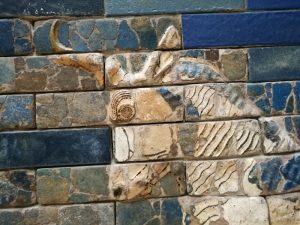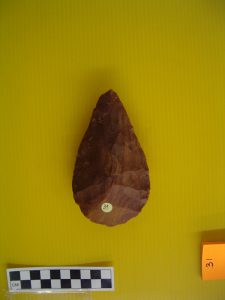Acheulian sites adjacent to Tabelbala in the Tachenghit Formation
Sahara Desert.
All images are available on request at prehistoricgalilee@gmail.com
History of Research – French army officers posted in the area of the Tabelbala Oasis in the early twentieth century were the first to identify the Acheulian sites in the area. Lieutenant César collected a large sample of Acheulian tools during his stay in 1911–12 (Alimen 1978). His collection formed the basis for Breuil’s definition (1930, 1931) of the Tabelbala Tachenghit technique. From 1948, Champault (1996) conducted a survey and excavations in the area, primarily in Feidj, located some 20 km north of the Tabelbala Oasis. During 1966–67, Alimen (1978) conducted two seasons of excavation, aimed to refine the stratigraphy and establish better control over the geology and cultural sequences. Both Champault (1966) and Alimen (1978) studied the collections of stone tools housed by different French institutions, providing a detailed description of them.
Geology – The limestone of the Tachenghit Formation was embedded in a shallow paleo-lake, created in the basin during the Pleistocene (Alimen 1978). Fig. A9 presents a typical section of the site of Feidj Tachenghit (Alimen 1978). Layer 2b represents Tachenghit white limestone, reported to bear Acheulian artifacts in in-situ context, embedded between layers of sandstone.
Stratigraphy – All the sites or stations in the area are short-occupation sites. They are scattered unevenly in terms of area and find density on the surface of the Tachenghit limestone layers (Alimen 1978).
Date – Alimen (1978) assigned all of the sites to the Final Ougartian stage.




